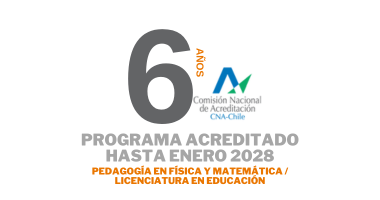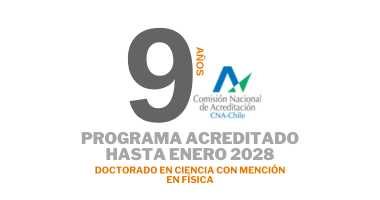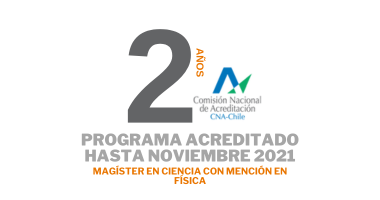Álvaro Rojas Arriagada

Mi investigación se enmarca en el área de la llamada Arqueología galáctica, y se orienta al estudio de las poblaciones estelares de la Vía Láctea, especialmente aquellas ubicadas en la parte central de esta, el llamado bulbo galáctico. He utilizado datos de mapeos fotométricos (VVV survey), astrométricos (VVV y Gaia), y especialmente, espectroscópicos (Gaia-ESO survey, APOGEE survey) para entender la composición química de las estrellas del bulbo y relacionarlas con su distribución espacial y cinemática. Esto es parte de un esfuerzo de largo aliento cuyo objetivo final es el comprender la historia de formación y evolución de nuestra galaxia.
Soy uno de los investigadores principales del Núcleo Milenio Evolución Reconstruida del Medio Interestelar (ERIS), iniciativa en la que nos hemos propuesto unir fuerzas con biólogos y matemáticos para aplicar unos de los principios de la teoría de la evolución de Darwin -descendencia con modificación- para entender la evolución cósmica a partir de información de la química de las estrellas.
Disfruto enseñando y conversando de ciencia, y en este sentido, intento transmitir la belleza encerrada en la naturaleza de las cosas, tanto en mis clases como en las actividades de divulgación; es una responsabilidad, y también un privilegio, el poder compartir con la sociedad los frutos de la investigación y el descubrir científico.
Publicaciones:
- Web of Science ResearcherID: DVW-5052-2022
- https://orcid.org/0000-0003-0208-8854
RESUMEN PUBLICACIONES:
- 2024-On the Evolutionary History of a Simulated Disk Galaxy as Seen by Phylogenetic Trees-Astrophysical Journal-https://doi.org/10.3847/1538-4357/ad036a
- 2024-The treasure behind the haystack: MUSE analysis of five recently discovered globular clusters-Astronomy and Astrophysics-https://doi.org/10.1051/0004-6361/202347915
- 2024-Assembling a high-precision abundance catalogue of solar twins in GALAH for phylogenetic studies-Monthly Notices of the Royal Astronomical Society-https://doi.org/10.1093/mnras/stae280
- 2022-The VVV survey: Long-period variable stars: I. Photometric catalog of ten VVV/OGLE tiles-Astronomy and Astrophysics-https://doi.org/10.1051/0004-6361/202141805
- 2022-Spectroscopic analysis of VVV CL001 cluster with MUSE-Monthly Notices of the Royal Astronomical Society-https://doi.org/10.1093/mnras/stac934
- 2021-Hidden in the haystack: Low-luminosity globular clusters towards the Milky Way bulge-Monthly Notices of the Royal Astronomical Society-https://doi.org/10.1093/mnras/stab2463
- 2021-CAPOS: The bulge Cluster APOgee Survey: I. Overview and initial ASPCAP results-Astronomy and Astrophysics-https://doi.org/10.1051/0004-6361/202140436
- 2021-Using classical Cepheids to study the far side of the Milky Way disk: II. The spiral structure in the first and fourth Galactic quadrants-Astronomy and Astrophysics-https://doi.org/10.1051/0004-6361/202039512
- 2021-The diffuse interstellar band around 8620 Å: II. Kinematics and distance of the DIB carrier-Astronomy and Astrophysics-https://doi.org/10.1051/0004-6361/202141128
- 2021-Final Targeting Strategy for the SDSS-IV APOGEE-2S Survey-Astronomical Journal-https://doi.org/10.3847/1538-3881/ac2cbc
- 2021-The nuclear stellar disc of the Milky Way: A dynamically cool and metal-rich component possibly formed from the central molecular zone-Astronomy and Astrophysics-https://doi.org/10.1051/0004-6361/202140499
- 2021-Apogee view of the globular cluster ngc 6544-Monthly Notices of the Royal Astronomical Society-https://doi.org/10.1093/mnras/stab1051
- 2021-The Milky Way bar and bulge revealed by APOGEE and Gaia EDR3-Astronomy and Astrophysics-https://doi.org/10.1051/0004-6361/202039030
- 2021-The diffuse interstellar band around 8620 Å: I. Methods and application to the GIBS data set-Astronomy and Astrophysics-https://doi.org/10.1051/0004-6361/202039736
- 2020-Using classical Cepheids to study the far side of the Milky Way disk-Astronomy and Astrophysics-https://doi.org/10.1051/0004-6361/202037575
- 2020-How many components? Quantifying the complexity of the metallicity distribution in the Milky Way bulge with APOGEE-Monthly Notices of the Royal Astronomical Society-https://doi.org/10.1093/mnras/staa2807
- 2020-Cool stars in the Galactic center as seen by APOGEE: M giants, AGB stars, and supergiant stars and candidates-Astronomy and Astrophysics-https://doi.org/10.1051/0004-6361/202038327
- 2020-Using classical Cepheids to study the far side of the Milky Way disk: I. Spectroscopic classification and the metallicity gradient-Astronomy & Astrophysics-https://doi.org/10.1051/0004-6361/202037575
- 2019-H-band discovery of additional second-generation stars in the Galactic bulge globular cluster NGC 6522 as observed by APOGEE and Gaia-Astronomy and Astrophysics-https://doi.org/10.1051/0004-6361/201834391
- 2019-Globular cluster candidates in the Galactic bulge: Gaia and VVV view of the latest discoveries-Astronomy and Astrophysics-https://doi.org/10.1051/0004-6361/201834986
- 2019-The chemistry of stars in the bar of the Milky Way-Astronomy and Astrophysics-https://doi.org/10.1051/0004-6361/201936779
- 2019-APOGEE DR14/DR15 Abundances in the Inner Milky Way-Astrophysical Journal-https://doi.org/10.3847/1538-4357/aaeff4
- 2019-The origin of stellar populations in the Galactic bulge from chemical abundances-Monthly Notices of the Royal Astronomical Society-https://doi.org/10.1093/mnras/stz1647
- 2019-The bimodal [Mg/Fe] versus [Fe/H] bulge sequence as revealed by APOGEE DR14-Astronomy and Astrophysics-https://doi.org/10.1051/0004-6361/201834126
- RESUMEN PROYECTOS:
- 2024-2026-FONDECYT DE POSTDOCTORADO 2024-Académico Patrocinante-ANID3240529
- 2024-EQUIPO PEDAGOGICO CIRAS: CERRANDO BRECHAS ENTRE LA ASTRONOMIA Y EL AULA III -Co-Investigador-ESO ORP 071/2023
- 2023-2025-ESTUDIO DE LA FORMACION DEL BULBO GALACTICO: HACIENDO ARQUEOLOGIA GALACTICA PARA COMPRENDER LA FORMACION DE LA VIA LACTEA-Investigador Responsable-VRIIC - DICYT REGULAR






